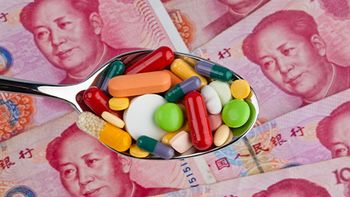
- Pharmaceutical Executive-07-01-2020
- Volume 40
- Issue 7
The Pharma Supply Chain: Responding to COVID-19
Taking stock of evolving practices in protecting the supply chain amid the pandemic, including partnering and planning for what’s next.
Assessing evolving practices in protecting the supply chain amid pandemic, including partnering and planning for what’s next
Every day, pharmaceutical distributors ensure the safe, efficient, and reliable delivery of 92% of the medicines purchased in the US, reportedly connecting 180,000 providers and pharmacies with 1,300 drug manufacturers nationwide. Now, amid the COVID-19-a global pandemic for which the world was not ready-it is both humbling and an honor to continue this work, despite many challenges. The US healthcare system, from pharma manufacturers and distributors to providers and pharmacists, has come together to make sure as many critical medications as possible reach the patients who need them most.
As we look to the next phase of the pandemic response and maintain our long view on protecting the supply chain, it’s critical we take stock of what has already evolved and how distributors can continue to provide stability. That work includes protecting in-demand medicines, ensuring safe product handling, and supporting clinical trials. It also means partnering across the supply chain to anticipate the next set of provider and patient needs and planning for them now.
Safeguarding in-demand medicine
When products are in or have the potential to be in short supply-either due to a surge in demand or a loss of production-distributors will often put those products on “allocation.” This means any one site of care can only order a certain volume of that product, based largely on its ordering history, so all sites of care can maintain a level of access.
Using a “fair share” allocation program helps ensure that well-meaning health systems, pharmacies, and providers do not unintentionally overstock a product out of fear of a shortage and, ultimately, cause an access issue at another site of care. These programs also help prevent the over-concentration of resources at any one site of care and allow the supply chain to maintain its flexibility and responsiveness.
In March, distributors saw unprecedented “surge ordering” across distribution networks. All at the same time, pharmacies, hospitals, and health systems throughout the US placed orders at volumes above historic purchase levels. For example, over the course of a three-day period, between March 12-15-from the day the novel coronavirus was declared a global pandemic and when stay-at-home orders started rolling out across the country -AmerisourceBergen saw a nearly 50 percent surge in orders and distribution. We quickly responded and went from distributing approximately four million products per day to nearly 6.5 million.
As a result, distributors needed to evolve their allocation strategies to reflect the specific realities of a pandemic, such as the emergence of “hot zones.” AmerisourceBergen realigned allocation programs to provide additional support in regions reaching the top of the COVID-19 curve and accounted for an increase in ICU beds and “pop up” clinics or hospitals in certain locations.
Now, we are seeing the supply chain continue to stabilize. But, we still face potential challenges with key products such as: ventilator and intubation drugs; sedatives; azithromycin; insulin; injectible narcotics; and
experimental COVID-19 therapies.
As the pharmaceutical supply chain collectively navigates forward, distributors, drug manufacturers, and sites of care will need to continue to communicate and collaborate as clearly and often as possible. Together, these parties will monitor inventory levels and purchasing behaviors, so they can manage supply and demand updates.
But, most importantly, this partnership is what will allow us to continue to quickly meeting patient needs, however they may evolve.
Ensuring product handling safety
Additionally, at the start of the pandemic, distributors were-and remain-acutely aware that every shipment contains products that eventually treat patients, many of whom could have underlying conditions that make them especially vulnerable to COVID-19. Not to mention, distributors’ own associates are part of the front-line workers who are making sure warehouses stay operational and the supply chain, as whole, remains functional. Meaning, it is critical these individuals stay healthy in order to continue ensuring essential medicines, such as those for heart disease, diabetes, cancer, and other conditions, reach patients.
For all of these reasons, product distribution centers (DCs) across the globe implemented and have now fully adopted additional cleaning measures.
For example, all of AmerisourceBergen’s healthcare distribution facilities have been using Shockwave and other powerful EPA-approved disinfectants to clean multiple times a day for several months. BruTab 6S is sodium dichloro-s-triazinetrione (NaDCC) and is included on the Environmental Protection Agency’s (EPA) list of approved disinfectants. It produces an available chlorine solution proven very effective as a disinfecting and sanitizing agent against a broad spectrum of micro-organisms, including COVID-19.
Teams at DCs continue to be extremely diligent in disinfecting associate working areas daily, while also increasing screenings for visitors, couriers, and partners. In addition, all drivers must confirm that pickup or delivery contacts are not known or suspected to have COVID-19 and arrange for contact-free deliveries or pickups whenever possible.
Documents signed by shipper or consignee and retrieval of monitors, packaging, or return shipments are also being arranged in a way that avoids physical contact whenever possible. For example, shippers have been avoiding the use of sharing pens by waiving the signage requirement or asking the consignee to use his or her own pen. Even when protected, though, one of the most universal directives is limiting person-to-person contact. In some cases, that means creating processes that involve as few points of contact as possible.
Supporting clinical trials
At the same time that patients are being asked to stay at home, pharma manufacturers are working to find a COVID-19 treatment while also advancing care for all other diseases-and one way is through the use of clinical trials. To protect these trials and ensure patients are able to participate, many manufacturers are working with their logistics partners to explore or implement new models, including direct-to-patient (DtP) options.
Recognizing clinical trial participants are often patients with chronic conditions or part of particularly vulnerable populations, DtP services allow patients to remain at home, following the current guidance of public health officials (i.e., social distancing and self-isolating). Patients can continue to access novel and life-saving therapies without having to put themselves at risk by traveling to hospitals and infusion clinics for treatment, and manufacturers are still able to collect critical data that will ultimately support the approval of their innovative therapies. This approach has proven so successful that specialty logistics providers are able to map increased interest in DtP services in correlation with the spread of COVID-19. The industry first saw an increase in the use of DtP models in China and Europe and is now seeing those same inclines in North America.
Looking ahead, though, just as specialty logistics providers are tracking and anticipating rising interest in DtP models, patient support services companies are also seeing an increased need to support patients in coping with the other effects of COVID-19, including economic hardships.
deploying critical patient support
A record number of people lost their jobs in the US as businesses temporarily closed in the wake of “stay at home” guidance. In fact, more than 43 million Americans have filed for unemployment aid since the US declared COVID-19 a national emergency-the highest loss of jobs since the Great Depression. This economic downturn has created a significant spike in uninsured and under-insured patients, which has also created an increase in Medicaid claims and higher demand for patient assistance programs (PAPs) or patient copay programs.
Patient support providers are a vital link that enables the type of industry-wide collaboration that’s needed to address patient access, affordability, and adherence issues now to make a substantial impact in the future.
Pharmaceutical manufacturers have already begun working with PAP providers to understand the scale of need within their specific patient populations and developing plans for how to provide appropriate support. Additionally, they are working with partners, such as distributors, to design what those programs would look like based on possible scenarios and identify, now, the trigger points for implementing them.
Ultimately, as all stakeholders in the healthcare system continue to battle this global pandemic, throughout its many stages, sustained collaboration-especially between manufacturers and their distribution partners -is essential.
With an understanding of the efforts distributors are taking to protect access and support patients, manufacturers and distributors can navigate whatever unique supply chain challenges may come.
Heather Zenk, Senior Vice President, Strategic Global Sourcing, AmerisourceBergen
Articles in this issue
over 5 years ago
Will COVID-19 Usher in a New Era in Pharma Marketing?over 5 years ago
Is Drug Production Heading Back to Europe From Abroad?over 5 years ago
Central Focus: Targeting Unmet Need in CNSover 5 years ago
Will the Industry Rise to the Occasion?over 5 years ago
How Oncologists are Coping with COVID-19over 5 years ago
Virtual Hiring of the C-Suiteover 5 years ago
Culture and Compliance: Building a Culture of Business Ethicsover 5 years ago
Fauci: Industry Will ‘Walk Away’ From COVID Price Controlsover 5 years ago
A Sustainable Response to COVID-19over 5 years ago
Enterprise Leadership: Is Compliance Ripe for Disruption?Newsletter
Lead with insight with the Pharmaceutical Executive newsletter, featuring strategic analysis, leadership trends, and market intelligence for biopharma decision-makers.




